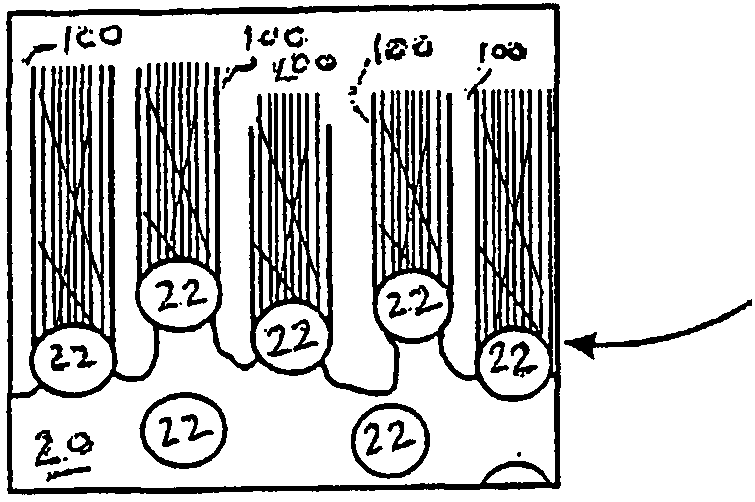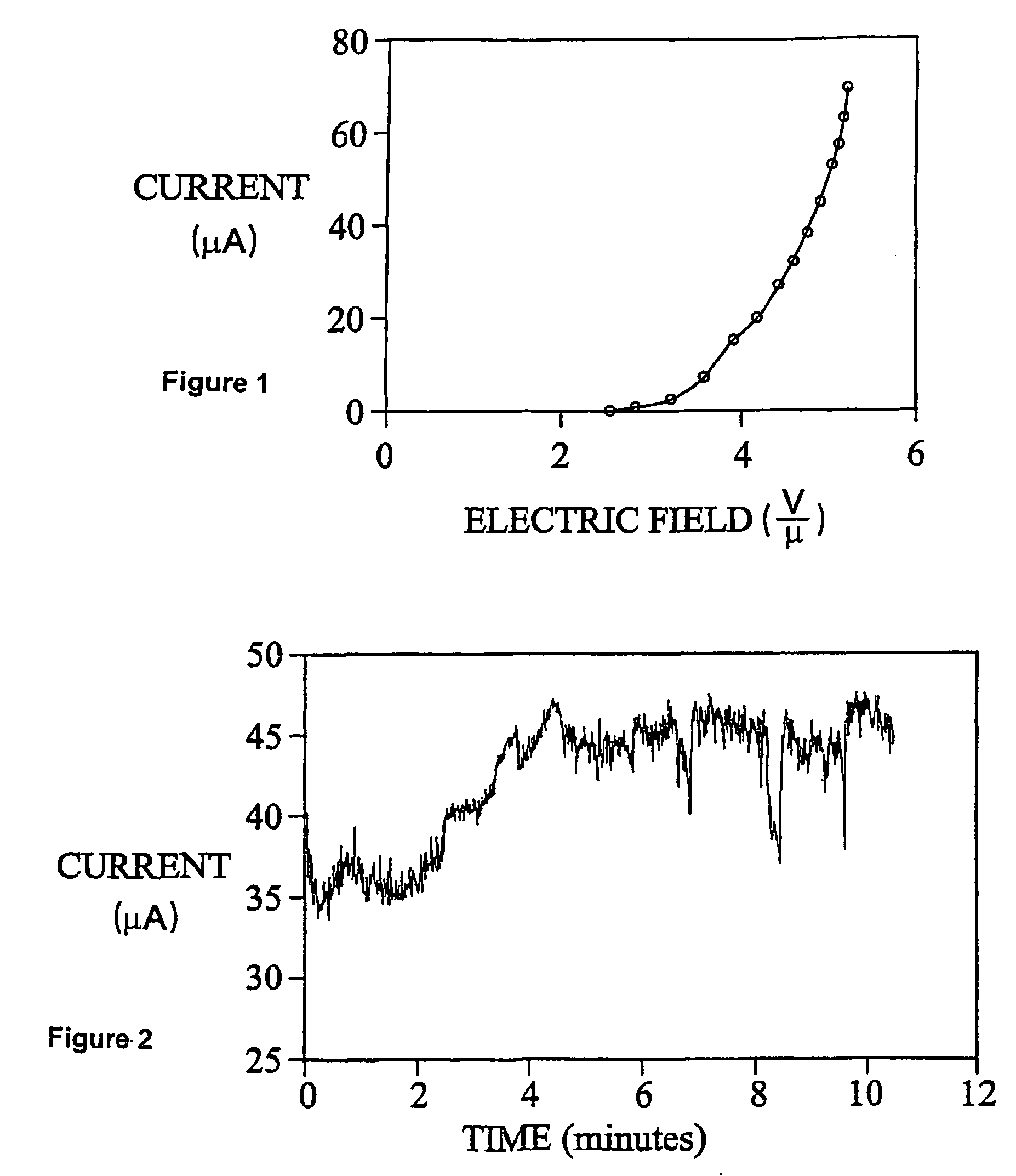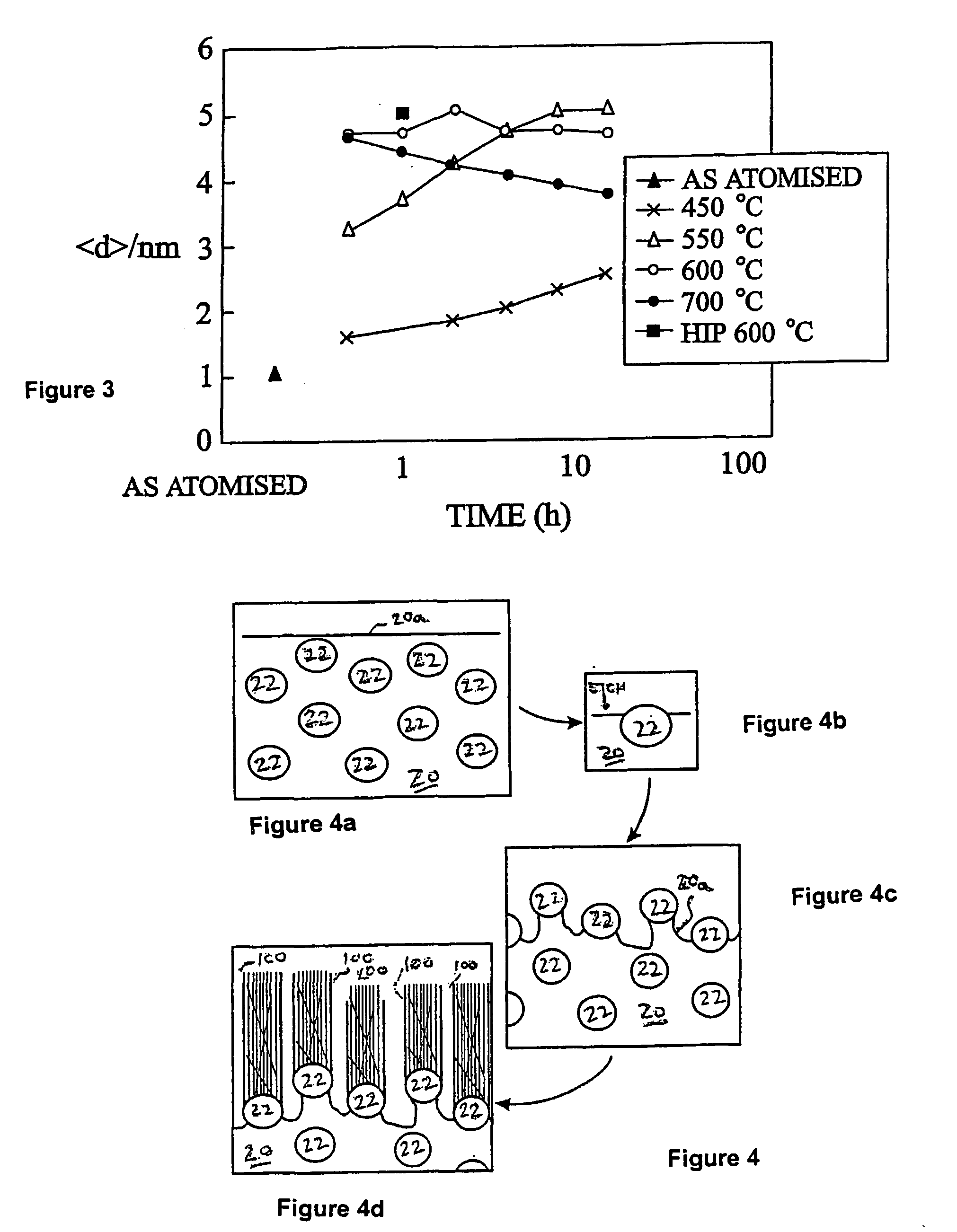Methods of direct growth of carbon nanotubes on catalytic surfaces
a technology of carbon nanotubes and catalytic surfaces, which is applied in the direction of material nanotechnology, coatings, textiles and papermaking, etc., can solve the problems of limited field and thermionic emission of nanotube devices, limited application prospects, and limited synthesis of robust materials
- Summary
- Abstract
- Description
- Claims
- Application Information
AI Technical Summary
Benefits of technology
Problems solved by technology
Method used
Image
Examples
example
[0048] A sample is prepared by successively sputtering 1000 angstroms of Cu, 150 angstroms of Co and another 1000 angstroms of Cu on a silicon substrate with native oxide coating. The wafer is heat treated at 450° C. for 40 minutes to form Co precipitates. The wafer is then etched in 5 vol. % HNO3 in water to reveal the Co precipitates. CNTs are then grown on the surface of the wafer by plasma enhanced CVD. A photomicrograph of the CNTs is shown in FIGS. 8 and 9. These tubes have been imaged by transmission electron microscopy and an example of one of the tubes is shown in the photomicrograph of FIG. 10. The fringes from the walls of the nanotube are clearly visible.
PUM
 Login to View More
Login to View More Abstract
Description
Claims
Application Information
 Login to View More
Login to View More - R&D
- Intellectual Property
- Life Sciences
- Materials
- Tech Scout
- Unparalleled Data Quality
- Higher Quality Content
- 60% Fewer Hallucinations
Browse by: Latest US Patents, China's latest patents, Technical Efficacy Thesaurus, Application Domain, Technology Topic, Popular Technical Reports.
© 2025 PatSnap. All rights reserved.Legal|Privacy policy|Modern Slavery Act Transparency Statement|Sitemap|About US| Contact US: help@patsnap.com



